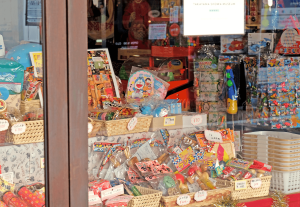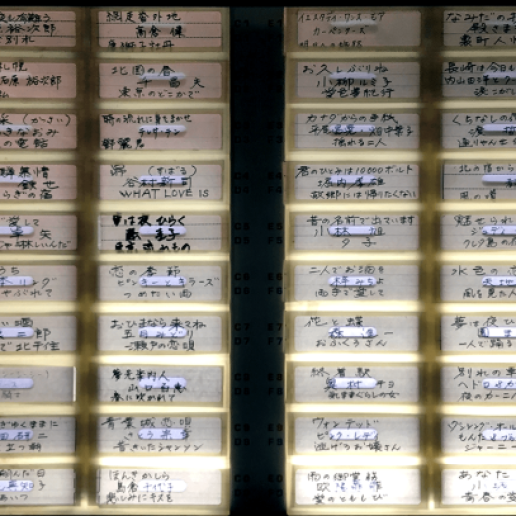 Today I bring to you a true Hidden Gem of Takayama-city – the Shōwa era museum. Hidden Gem in every send of the word. Hidden because it’s literally through the back of a toy & candy store, unseen until you enter through a curtained door. A Gem because while it is not huge in size, it’s uniqueness and quality make up for it in its brilliance!
Today I bring to you a true Hidden Gem of Takayama-city – the Shōwa era museum. Hidden Gem in every send of the word. Hidden because it’s literally through the back of a toy & candy store, unseen until you enter through a curtained door. A Gem because while it is not huge in size, it’s uniqueness and quality make up for it in its brilliance!

Once inside the toy and candy store… you wonder, how big could this museum be?? There’s really no way to tell without paying admission. My opinion – it’s worth the $8 to get in, and there was more to explore than I expected. Certainly not a huge museum – but an adventure for the eyes with plenty entertain you for an hour or two.
As you enter the museum you begin to feel transported to a part of Japan’s not too distant past (Showa period 1926-1989). A time that endured a lot of change and most of us have only seen in the movies, where industry, fashion and culture changed following the war. For some, that period may even be our original vision of Japan.
The layout of the museum breaks the art installations out into various themed rooms or shops that line a street.
 You get the quaint feeling that this must have started as someone’s personal collection… which grew out of control, and then took on a new meaning – and then others began to contribute. Is this true? Maybe not – but i’d like to believe it is.
You get the quaint feeling that this must have started as someone’s personal collection… which grew out of control, and then took on a new meaning – and then others began to contribute. Is this true? Maybe not – but i’d like to believe it is.
Some of the items are rare pop-culture relics that collectors-of-too-many-things like me would love to have in their own home, while other items feel more normal, as if you might be able to find them in a second-hand junk store. Together it works, building a vibe that allows the imagination to run.
It’s not hard to find a variety of classic movie posters, both foreign and domestic.
Another thing that makes this museum unique is the access. There’s no barriers, ropes or security guards – you are in it. Trusted to treat the place with a measure of respect.


 As i wander around, I wonder where all this stuff came from, and who in town still has treasures like these sitting in their own closet or storage house. I certainly don’t see these types of items in the local second-hand store. One side of the street we see a barber shop, while another corner has a recreation of a camera stores. You pop in and out of rooms, and inevitably your eyes are drawn to the tiny details
As i wander around, I wonder where all this stuff came from, and who in town still has treasures like these sitting in their own closet or storage house. I certainly don’t see these types of items in the local second-hand store. One side of the street we see a barber shop, while another corner has a recreation of a camera stores. You pop in and out of rooms, and inevitably your eyes are drawn to the tiny details
 Video game nerds will be happy to know there is a small gaming area set aside with emulations of Nintendo, Intellivision, and other 80’s era game consoles where you can take a rest and relive some childhood memories.
Video game nerds will be happy to know there is a small gaming area set aside with emulations of Nintendo, Intellivision, and other 80’s era game consoles where you can take a rest and relive some childhood memories.

And I can’t go without mentioning one room which i found to be especially endearing – the Showa era classroom. Is this classroom like the one that “the creator” of this museum went to school in? I can’t tell you. But I hope to answer some of these lingering questions about how and why this small but beautiful museum was created, and I hope that you check back if you are just as curious as I am.
Now go check out my post 8 Things to Love About the Japanese Countryside.

















































